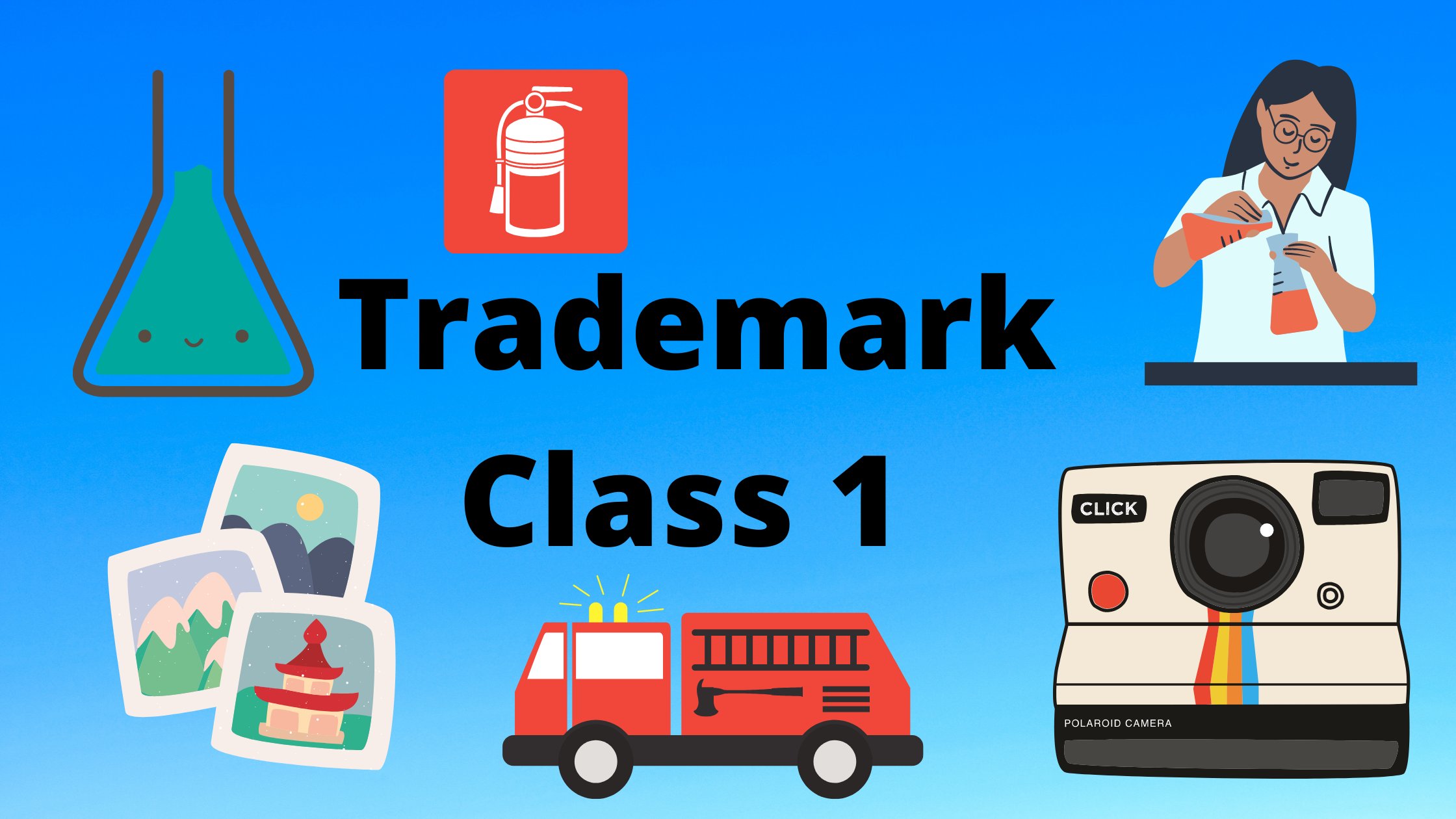TRADEMARK CLASS 1 Use and details
The following goods are classified under Class 1: Chemicals used in industry, science and photography, as well as in agriculture, horticulture and forestry; unprocessed artificial resins, unprocessed plastics; manures; fire extinguishing compositions; tempering and soldering preparations; chemical substances for preserving foodstuffs; tanning substances; adhesives used in the industry.

INTRODUCTION:
Trademark plays a very essential role in the life of consumer as he tries to purchase goods and products in the market place based on the brand he knows and in which he has trusted. When mark can be graphically represented and this mark can differentiate between goods or services of one Individual with goods and services of another and this mark can be the shape of goods, colour combination or packaging and this type of mark term as a Trademark.
The Fourth Schedule to the Trademark Rules, 2002 lays down the different trademark classes. Trademark has a total of 45 classes according to the NICE classification also known as International Certification of Goods and Services and the manufacture of goods and services are grouped into different classes. Among those 45 classes, 34 classes come under Goods section and 11 classes come under Services sections. Every class requires a different registration and while applying for the Trademark registration, it is necessary to choose the right class. Trademark search is done while selecting an appropriate class for your goods and services. This is a classification of almost 80,000 products and services.
CLASS ONE OF THE TRADEMARK ACT:
Trademarks must be applied or registered under classes and each class represents a distinct class of goods or services. The following goods are classified under Class 1: Chemicals used in industry, science and photography, as well as in agriculture, horticulture and forestry; unprocessed artificial resins, unprocessed plastics; manures; fire extinguishing compositions; tempering and soldering preparations; chemical substances for preserving foodstuffs; tanning substances; adhesives used in the industry.
This class includes, in particular: sensitized paper; tyre repairing compositions; salt for preserving, other than for foodstuffs; certain additives for use in the food industry, for example, pectin, lecithin, enzymes and chemical preservatives; certain ingredients for use in the manufacture of cosmetics and pharmaceuticals, for example, vitamins, preservatives and antioxidants; certain filtering materials, for example, mineral substances, vegetable substances and ceramic materials in particulate form. The class does not include: raw natural resins; chemical products for use in medical science; fungicides, herbicides and preparations for destroying vermin; adhesives for stationery or household purposes; salt for preserving foodstuffs; straw mulch. Few examples of registered Trademark in India under class1 are: CHEMINOVA INDIA LTD.; BIONEEM BIO PESTICIDE; CHEMIK; CHEM-FERTS; BIOVITA; BIO+ PLUS; FOOD DECTECTIVE; LOWCAL; MARCOLEX; MICROBAC; AMINOZ; AGRINATURE; SHIRI.
If the mark is being used in commerce, then you must furnish a specimen of this mark as consumers see it. It is necessary for the specimen to show the mark as used on or in connection with the goods in commerce. A trademark specimen should be a tag, label, or container for the goods or a display which is associated with the goods. In most cases, the label is an acceptable specimen, if the trademark is applied to the goods or the containers for the goods in Class 1 by means of labels. Mailing or shipping labels may be accepted if proper usage is shown and if they are fixed to the goods or to the containers for the goods. It is not acceptable if the mark shown is just used as a trade name and not a trademark.
There are also interrelated trademark classes i.e., if the applicant is unsure about registering in class 1 then one can consider “coordinated” classes: class 5- Pharmaceutical, class 17- Rubber products, Class 35- Advertising and Business Services, Class 42- Science and Technology Services, and Class 44- Medical and Vet Services.
CASE LAWS:
Pidilite Industries Limited vs. Poma-Ex Products 2017 (72) PTC 1 (Bom):
The plaintiff, Pidilite Industries Limited registered its mark in 1987 underclass 1 in respect of adhesive for domestic, technical and industrial process. In 2008, the plaintiff applied for and obtained registration of FEVIKWIK distinctive packaging under class 16 and has registered its trademark ‘FEVIKWIK’. The defendant, Poma-Ex has been in continuous extensive use of the mark ‘Kwikheal’ and got its registration in 2104. Soon after, the plaintiff came to know this and sued the defendant over infringement of trademark and passing off. The High Court passed ad-interim injunctions to restrain the defendants from selling their infringing products on primfacie findings.
The Bombay High Court observed that the word Kwik cannot be said to be a commonly used word by the public or common to trade and Defendant cannot infringe the mark. It was also held that the word ‘kwik’ is not common to trade and there exists an element of the likelihood of confusion or deception if it is used by both the Plaintiff and the Defendant. The Plaintiff also questioned the validity of the registration of trademark of Defendant, it was held that that court can go into the validity of the registration of the Defendant at the interlocutory stage for rendering a prima facie finding of the issue. Also, in this case, the Defendant has removed the word "POMA-EX" from its label deliberately even though it has kept the remaining ingredients identical.
It was held by the court that there exists a prima-facie case as the balance of convenience lies in favour of the Plaintiff after comparing the mark ‘FEVIKWIK’ with the mark of the Defendant ‘KWIKHEAL’ which is prima facie deceptive or misleading. Further, it held that in cases where the infringing mark is registered, prima facie remedy can be granted to the prior user of the mark who has gained reputation in the market if it is found that the infringing mark is deceptive in nature and causing confusion in the minds of the public.
Research by -
Sameeksha Shukla
BB.A LL.B (Hons.) specialization in Corporate Law ( 5th year)
SOL, UPES, Dehradun












